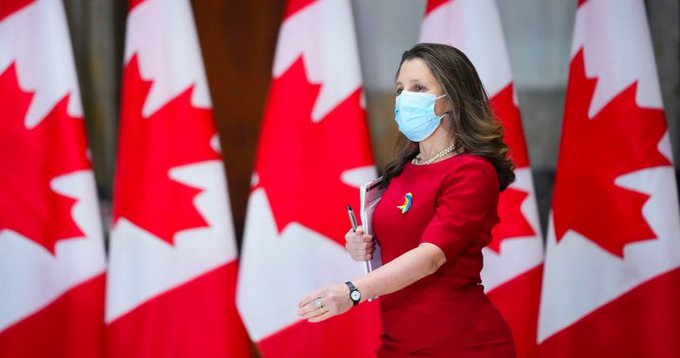McLeod Group blog by Stephen Brown, April 11, 2022
We have to give credit when credit is due, but also recognize obfuscations when we see them. The Canadian government’s 2022 budget, released on April 7, provides opportunities for both regarding development assistance. There is not much to parse, though, as not even two full pages of the 280-page budget document are devoted to “international assistance”. In them, there is some good news, but little by way of new ideas or new money.
Framing Canada’s international assistance
The budget’s first page on international assistance focuses mainly on Canada’s past record and vague statements of principle, with bromides such as “Canada has an important role to play in promoting and strengthening democracy and human rights, and ensuring that, through our Feminist International Assistance Policy, we do our part to improve the lives of women, girls, and vulnerable populations around the world”. Note that “ensuring that… we do our part” is phrased as an aspiration, rather a fact. That is honest, as Canada has long been less generous than the average Western aid donor.
Interestingly, that sentence contains one of only two mentions of a feminist approach in the entire budget document. That is surprising for a government that has touted its feminism as a core principle in domestic and international affairs. Perhaps the government is being refreshingly honest regarding foreign policy. Ukraine occupies a prominent place in the budget’s chapter on foreign policy, but there is not much feminist about Canada’s support to that country. The budget document mentions “lethal aid” to Ukraine four times. I wonder how the government will frame that in its long-overdue feminist foreign policy document. Regardless of whether one approves or not of sending deadly weapons to Ukraine, it is hard to argue that a military response is an expression of feminism.
Money matters
Returning to the issue of foreign aid, the big reveal is that Canada spent over $7.6 billion on international assistance in 2020-2021, which is a record high. Good news indeed. The document further states that “the government is committed to increasing international assistance funding towards 2030”. Sounds good, but attentive readers might notice that that formulation is a step down from its prior commitments. Previously, including most recently in the Minister of International Development Harjit Sajjan’s mandate letter, the government pledged to boost aid spending every year.
Why is the government rescinding its promise to increase aid every year? Probably because it has already broken it. No actual figures are provided, but eyeballing a bar chart in the budget document reveals that international assistance is expected to be a bit lower in the 2021-22 fiscal year, which just ended, than the previous year. Oops. According to the graph, the current year’s expenditures should be higher, totalling over $8 billion, which is promising. But the graph ends there, with no indication of what to expect in subsequent years.
Although the budget doesn’t provide projections of total aid levels, a table does list one new item starting next year: $74 million annually for four years for “strengthening global health security”. Definitely a good goal, but the lack of any other new spending plans suggests that the aid budget will be flat after this year’s increase. Compare that amount with the extra $8 billion announced for national defence over five years.
Taking into account rising inflation, the real value of the aid budget will decrease. Likewise, as the Canadian economy continues to grow, the percentage of gross national income devoted to official development assistance (the international metric for generosity) will fall once again. So much for “doing our part” in any sustained way, let alone reaching the UN target that Canada committed to decades ago.
Doing more for global health
Global health is the focus of the rest of the budget’s content on foreign aid. The header, “Leading in the Global Fight Against COVID-19”, presented in large, bold letters, is overstated. However, the budget’s additional contributions “to improve equitable access to COVID-19 vaccines, tests, and treatments” will mean that Canada is contributing close to its fair share.
Still, Canada could easily do more. In particular, it should stop obstructing COVID-related patent waivers, first proposed one-and-a-half years ago by India and South Africa, at the World Trade Organization. Moreover, it should ramp up its donation of COVID vaccines, of which Canada is a record-breaking stockpiler. It should release them according to a planned schedule, rather than at the last minute, just before the doses expire. Otherwise, it forces international organizations and recipient countries to scramble or, worse, does not allow them administer the vaccines in time.
In sum, Budget 2022 contains some good news for international development, mainly in the form of more money for global health. But it tells us very little about what to expect otherwise from Canada’s aid program, except for potentially flat expenditures starting next year. And the budget provides little hope for non-aid-related steps Canada could take to support development around the world, often at little or no cost, notably in the urgent fight against COVID.
Stephen Brown is Professor of Political Science at the University of Ottawa and currently Leverhulme Visiting Professor at the University of Cambridge Centre for Gender Studies. Image: Global News.
